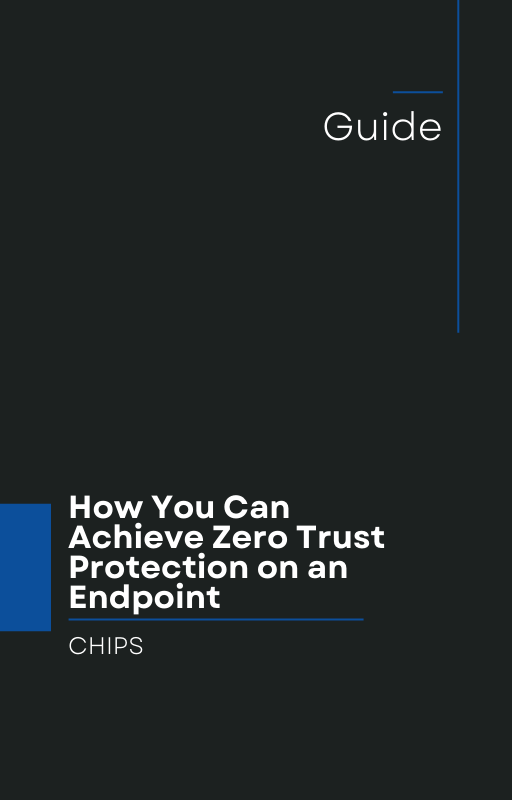A recent caution from Microsoft has sent ripples through the tech world and landed squarely on the desks of IT-security and business leaders everywhere. According to reporting by Forbes, Microsoft is warning users that hundreds of millions of PCs—particularly those running unsupported or outdated systems—are facing elevated risk of hacker access. forbes.com+1
This development holds a very practical lesson for enterprise cyber-strategy: while keeping systems patched and up to date remains essential, it is no longer sufficient. The risk environment is shifting such that you must assume compromise rather than hope to prevent all attacks. That means moving from a posture of “Detect and Respond” to one of “Isolation and Containment”.
Here’s what business leaders need to know—and what they should do about it.
The core issue: legacy windows systems + attackers
Microsoft’s alert is grounded in a set of real and worsening facts:
-
Many organisations and users continue to rely on older PC hardware or OS versions that Microsoft no longer fully supports. Support lifecycles have ended, meaning no new security patches or updates.
-
Unsupported machines become a magnet for opportunistic and sophisticated attackers alike, who know these systems often lack the latest defences or are not monitored as closely.
-
When attackers gain access via a weak or unpatched endpoint, lateral movement, data exfiltration and ransomware become realistic. The defenses of “we’ll just detect it later” start to crumble.
In short: the base-layer risk is going up. And for business systems, that means your endpoint protection plays a pivotal role in how well you survive or recover from an incident.
Why “Detect and Respond” is no longer enough
Traditional endpoint protection models emphasise detecting threats (malware signatures, behaviour rules) and then responding (quarantine, forensic investigation, clean-up). The problem? Those methods assume you see the attacker early, you have visibility, and then you act. But in the current climate:
-
Attackers often exploit zero-day vulnerabilities or misconfigurations that bypass detection.
-
By the time detection triggers, the attacker may already be moving laterally or extracting data.
-
Response is inherently reactive. The damage may already be done before you hit “respond”.
For example, in manufacturing, in healthcare, in IT supply-chains, adversaries are leveraging custom malware and advanced tactics that delay detection or evade traditional tools entirely.
If you rely purely on “detect and respond”, you accept that the attacker has gained access and you’re catching up. That is no longer a sufficient posture for today’s threats.
Why “Isolation and Containment” should be your new mantra
In contrast, a posture built on isolation and containment acknowledges that prevention is imperfect—and instead focuses on limiting the blast radius, stopping attacker dwell time, and ensuring that even if a foothold is gained, critical systems remain injury-free.
Here’s why this approach is superior:
-
It segments endpoints and restricts attacker movement.
-
It prevents the attacker from accessing sensitive or high-value assets, even if they exploit an endpoint.
-
It reduces time to contain, reduces data loss and lowers overall business impact.
And this is precisely where the proven solution AppGuard comes in. With over a decade of proven endpoint protection success, AppGuard shifts the model from “maybe we will detect it” to “we contain it from the moment it appears”.
Why business owners should take note now
There are three pressing reasons business owners and senior IT decision-makers should act:
-
Elevated risk across the board: With Microsoft’s warning about unsupported or mis-upgraded PCs, your endpoints are under increasing pressure. You cannot rely on “just trusting the vendor will patch everything” anymore.
-
Attackers moving faster and smarter: From AI-written malware to custom RATs, the tools of the adversary are stepping up. The window between compromise and data breach is shrinking.
-
Compliance and reputational stakes are growing: A breach can mean regulatory scrutiny, customer churn, supply-chain disruption. Limiting the impact of an incident must be priority #1—not simply hoping you’ll detect it early.
How AppGuard empowers you
When you adopt AppGuard’s isolation-first approach, you gain:
-
Preventive containment: Execution control and enforced isolation of processes mean that even if hostile code runs, it cannot spread to mission-critical assets.
-
Minimal reliance on detection signatures: AppGuard reduces dependence on identifying the attack ahead of time. Instead it limits what the attacker can do.
-
Proven track record: With more than a decade of successful deployment, AppGuard is battle-tested in enterprise environments.
-
Lower damage scenario: Because containment limits blast radius, your downtime, data loss, remediation costs and reputational impact all decrease significantly.
In the current climate—where Microsoft warns of mass-scale endpoint vulnerability—you need a defence architecture that assumes breach, limits damage, and recovers fast.
What you should do now
If you are a business owner or senior IT leader, take the following steps:
-
Inventory your endpoint estate: Identify all PCs, laptops, mobile endpoints, and confirm OS version, patch status, hardware compatibility.
-
Flag unsupported systems: Prioritise anything running an OS that is out-of-support or will be soon.
-
Assess your endpoint protection strategy: Are you mostly relying on signature-based detection and response? If yes, you’re exposed.
-
Engage with a containment-first solution: Solutions like AppGuard provide the missing layer of control and limitation.
-
Prepare your incident-impact scenarios: How much data would a breach cost? How quickly could you contain it? What would protection cost?
Final word
The Forbes article about Microsoft’s warning is more than a headline—it’s a clear signal to businesses that endpoint risk is accelerating. Traditional “Detect and Respond” paradigms are under strain. The smarter move is “Isolation and Containment”.
The time to act is now. If you run a business—whether it’s small, mid-sized, or enterprise—you cannot afford to wait until a breach happens. You must assume compromise is inevitable, and build your defences accordingly.
Call to Action
If you are ready to move beyond detection and build a stronger, containment-centric endpoint defence strategy, talk with us at CHIPS. We’ll show you how AppGuard can prevent incidents like those forewarned by Microsoft, and help protect your business from the next wave of cyber threats. Let’s work together to shift from “Detect and Respond” to “Isolation and Containment”. Contact us today.
Like this article? Please share it with others!

November 5, 2025

Comments